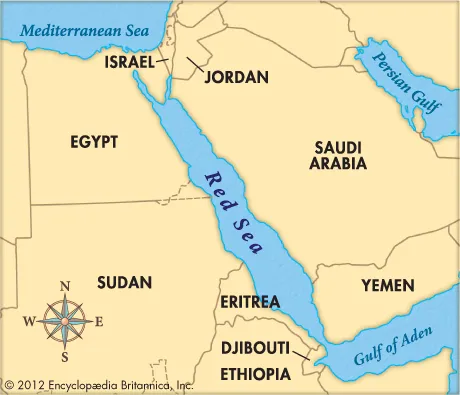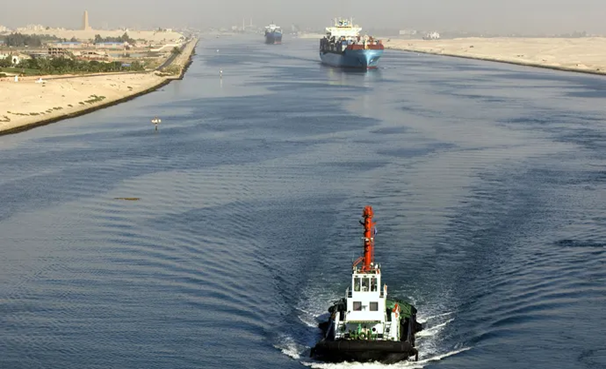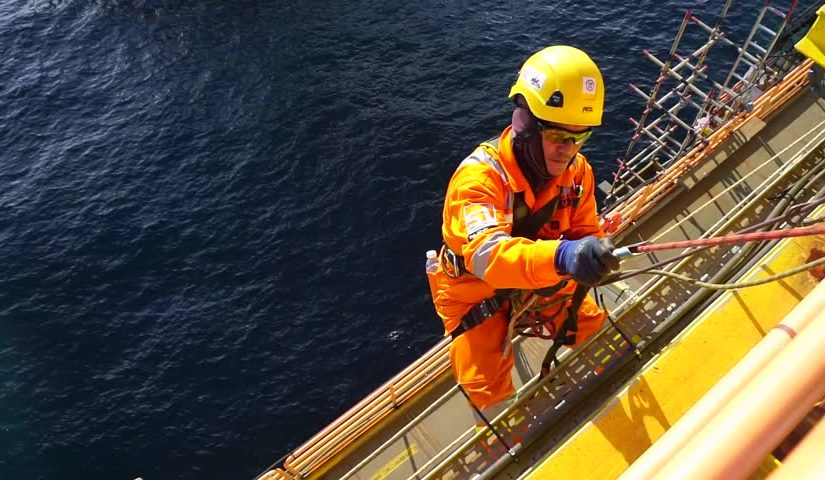Introduction
ICZM plays an integral role in the management of RSGA. It is defined as an interactive, multifaceted, and adaptive approach to effective handling of coastal zones (Gumbira and Harsanto, 2019, p.1179). It includes everything, from gathering information to planning, deciding, and managing the implementation of a plan, as well as keeping track of operations. Some stakeholders that assist with sustainable operations in RSGA are maritime users, the tourism industry, and many more. To achieve this, PERSGAR exists to provide a platform for effective coastline conservation. For example, it ensures that people and organisation protect the environment by adopting policies that guide their operations. Therefore, ICZM promotes the attainment of sustainable operations.
Description of Integrated Coastal Zone Management
Integrated coastal zone management (ICZM) is a procedure for managing the coastline using an integrated approach, considering all coastal zone components. ICZM approach is a dynamic, multidisciplinary, and iterative method that promotes the sustainable management of coastal zones (Gumbira and Harsanto, 2019, p. 1178). It encompasses the entire process, from gathering information to planning, deciding, and managing the implementation of a plan and monitoring its progress. Furthermore, to evaluate the societal goals of a particular coastal area and devise strategies for working toward achieving these goals, ICZM relies on the active participation and cooperative efforts of all of the relevant stakeholders (Gumbira and Harsanto, 2019, p.1180). Therefore, it is a process for managing the coast using an integrated approach to all aspects of the coastal zone.
ICZM is a process of resource management that is ongoing, proactive, and adaptable for future uses of coastal and ocean resources. The approach is process-oriented, focusing on practical and attainable parameters (Nagabhatla et al., 2019, p.6). As shown in the figure above, it is considered the most effective strategy for achieving sustainable development in coastal areas. This is accomplished by integrating several components, such as intersectoral integration. ICZM is based on the relationships between ecosystems, socioeconomic, and political systems, and it must be made to fit the needs of coastal areas. Thus, it is a multiscale process that requires coordination and cooperation between different administrative bodies and flexible ways of managing.

The Key Stakeholders in RSGA
The RSGA is a globally recognised region for its unique coastal and marine biodiversity, which is critical for worldwide sea transport and has specific economic, cultural, and social importance for the region. The ecosystems in the RSGA have different kinds of plants and animals and a high number of endemic species (Kanwar et al., 2019, p.64). Several places and species in the area are important for worldwide conservation. As shown in the figure, the countries around RSGA play an integral role in its conservation. In addition, different stakeholders affect the region’s conservation, as described in the table (PERSGAR, 2022). These stakeholders are port authorities, maritime users, fishermen, the tourist industry, policymakers and enforcers, and the locals.

Table 1: Description of Stakeholders in RSGA
Description of PERSGAR Organisation
PERSGAR is a regional organization for environmental conservation in the Red Sea and the Gulf of Aden. The PERSGA council meets once every two years to adopt new technical and financial regulations (PERSGAR, 2022). The organisation’s day-to-day operations are overseen and carried out by a secretariat, comprised of experts drawn from the various member nations and led by the Secretary-General. Since it was established, the PERSGA Secretariat and its offices have been located in Jeddah, which is located inside Saudi Arabia (PERSGAR, 2022). The monitoring and evaluation system was designed to ensure that the organisation achieves its program objectives.
PEPSGAR is an international group of governments run by a council of ministers of the environment from its member countries. As shown in figure 3, these nations are Djibouti, Egypt, Jordan, the Kingdom of Saudi Arabia, Somalia, Sudan, and Yemen (Britannica, 2022). The Kingdom of Saudi Arabia is where the group meets. In addition to the member states and the council, it has PERSGA National Focal Points, which comprise the cabinet secretaries of the environment ministries in each member state. In addition, the organisation has a secretariat that handles programs, projects, operations, and daily affairs. PERSGA’s organisational structure helps attain its objectives, such as coastline conservation.

The Key Roles of The PERSGA Organisation
Sustainable Management in RSGA
The main role of the PERSGA organisation is to enhance the sustainable management and utilization of the coastal and marine resources owned by the RSGA. In addition, the organisation promotes the development of sustainable strategies to protect the coastline (Carvalho et al., 2019, p.197). Implementing environmentally responsible management and usage practices is anticipated to result in fewer hazards to the natural environment. This is considered an improvement in the standard of living of coastal communities participating in the project and enhanced institutional, legal, and financial arrangements (Carvalho et al., 2019, p.175). As a result, the organisation intends to ensure that sustainable practices are adopted to conserve the environment along the Red Sea and the Gulf of Aden.
The goal is to make PERSGA a world-class center for managing coastal and marine areas based on what has already been done in the RSGA region. The primary focus is to set up a solid base of systems and structures to build capacity, support local projects, and share and embed their lessons across the region as a foundation for sustainable Development (Boel et al., 2019, p.227). This includes teaching people about the marine environment and getting them to care about it so the government can push conservation and responsible use to the local level. Therefore, PERSGA’s main mandate is to look at what the environment needs from the people whose actions determine its fate.
Management of Living Marine Resources
PERSGA organisation exists to ensure living marine resources are effectively managed in RSGA. Since its establishment, there has been improvement in fish stock assessment, data collection and analysis, environmentally sound aquaculture, fisheries management, and the assessment and management of marine resources (Kanwar et al., 2019, p.58). For instance, organisations adopt data intelligence. In addition, a training center in Aden, Yemen, and a reference collection center in Jeddah, Saudi Arabia, have been developed and given the tools they need. There is a way for fisheries information to be collected and sent effectively (Kanwar et al., 2019, p.54). Thus, all member states must embrace strategies geared towards protecting the environment.
Controlling Of Sea-Based Operations
PERSGA manages sea-based operations to minimize pollution. It facilitates the formulation of new rules for shipping routes in the southern Red Sea to be used by international ships (Lyons et al., 2020, p.97). For example, on the Hanish Islands, PERSGA has set up an Automatic Identification System. Workshops on handling oil pollution, port state control, investigating marine incidents, maritime safety, hydrologic surveys, emergency plans, and seawater management are conducted all over the region. The International Maritime Organisation assists PERSGA in achieving its goals at the Marine Emergency Mutual Aid Center in Hurghada (Lyons et al., 2020, p.88). As a result, all member governments now have national strategies for emergencies in the Red Sea and the Gulf of Aden.
Maritime Activities
The first maritime activity experienced in RSGA is sea transport. This involves the movement of people and products across the region across the sea. The most important cargoes from the north are crude oil and metals that have been worked. Wood, oilseeds, oilseed cake, and cereals are also necessary (Lyons et al., 2020, p.76). As depicted in the figure below, shipping is one of the main things along the RSGA (Smith, Gordon, and William, 2021). The canal separates Africa from Asia and is the quickest way for ships to get from Europe to the countries near the Indian and western Pacific oceans. Because of this, it is one of the world’s most used waterways for shipping.

Shipbuilding and port operations are among the primary maritime activities in the RSGA. Marine operations involve loading and unloading cargo from ships to trains and trucks. To load and unload ships, an individual needs different loading equipment, knowledge of how to lift and store cargo, and the right way to handle dangerous materials. For example, the figure below shows different machines required to facilitate the operations at the port (CDC, 2020). Shipbuilding is about building ships for effective movement in the Red Sea and the Gulf of Aden. Different companies operate along the gulf to provide vessels that aid the movement across the Red Sea.

Tourism
Tourism is among the major maritime activities in RSGA. The Red Sea and the Gulf of Aden are among the best places to visit, especially for diving (Asensio-Montesinos et al., 2019, p.123). Divers have been coming here for decades to spend most of their vacations underwater. In addition, today, this coast has become a popular place for sun and sea vacations. Families looking for a relaxing beach vacation at a full-service resort hotel come here as much as divers who come to see the coral and fish life. Therefore, the tourism sector has grown tremendously along the coastline of the Red Sea, owing to its fascinating features.
Main Maritime Rules, Regulations, and Policies
Maritime Rules
Maritime rules guide users on sustainable operations to be adopted. One of these rules is the prohibition of the dumping of wastes from any ship. This rule concerns the standards and operations for deliberate pollution of the sea. ICZM will use this rule to help in the conservation of RSGA. The other maritime rule is the need for constant onboarding training of maritime users on aspects of sustainable operations. Individuals who are working on the coastline are supposed to be certified. Mandatory training of employees will assist ICZM in the effective management of RSGA.
Maritime Regulations
Several regulations are established to guide operations in RSGA. Maritime labour convention has established health, safety, and welfare standards for people operating on the coastline, as shown in figure 7 (SHM, 2018). For example, there is a need to ensure that employees have safety equipment. The ship owners must ensure that seafarers meet the hours of work and rest required by the convention. Oil tankers must have a prior and proper plan when performing ship-to-ship transfer of oil cargoes. This regulation ensures minimal accidents such as oil spillage on the sea.

Policies
The Jones Act is one of the maritime policies that ICZM will use to promote the well-being of people operating in the RSGA. The law states that people who are injured and seamen or employed on board a vessel can get paid for their injuries (Papatheochari and Coccossis, 2019, p.289). It addresses shipping goods or people between ports in the same country and doing business at sea. Under the Jones Act, an employer must make sure their workers have a safe place to work and give them medical care. Thus, it has rules about how ships and safety gear should be kept up and what licenses, training, and qualifications crews must have.
The environmental protection law is among the maritime policies that ICZM should consider to manage RSGA effectively. This regulation was made to protect the marine environment and resources, stop pollution, keep the environment balanced, protect human health, and help marine programs grow (Dale et al., 2019, p.45). The act guides the organisation, supervision, and inspection of the environment along the coastline. For example, when building harbors, oil terminals, water conservation facilities, and tidal power plants in estuaries, ICZM must take a series of steps to protect the water resources. Therefore, environmental conservation policies provide a framework for effective coast management.
Main Challenges
In my view, there are several challenges that ICZM should deal with in RSGA in the next 20 years. The first problem is climate change, as depicted in figure 6 (GRIDA, 2022). With increasing industrialization and globalization, it is anticipated that climate change is likely to be experienced. Secondly, lack of knowledge on sustainable operations is a major issue that ICZM needs to consider. Some people do not understand that their activities, directly and indirectly, affect the environment. Thirdly, there is the problem of poor governance in the organisation operating in RSGA. Addressing these issues will enable ICZM to conserve the environment at RSGA effectively.

Conclusion
ICZM should be integrated with the PERSGA organisations for sustainable operations. It is a way to take care of coastal zones in a way that is good for the environment, is interactive, has many parts, and can change over time. It includes everything, like getting information, making plans, making decisions, putting plans into action, and keeping track of how things are going. Some groups that help RSGA ensure its operations are sustainable are maritime users, the tourism industry, and many more. To do this, PERSGAR is there to provide a place where the coast can be effectively protected. Therefore, it ensures people care for the environment by following the rules.
Reference List
Asensio-Montesinos, F., Anfuso, G., Randerson, P., and Williams, A. T. (2019) ‘Seasonal comparison of beach litter on Mediterranean coastal sites (Alicante, SE Spain)’, Ocean & Coastal Management, 181, 104914. Web.
Britannica. (2022). Red Sea. Britannica Kids. Web.
Carvalho, S., Kürten, B., Krokos, G., Hoteit, I., and Ellis, J. (2019) World seas: An environmental evaluation. Academic Press.
Boël, G., Danot, O., de Lorenzo, V., and Danchin, A. (2019) ‘Omnipresent Maxwell’s demons orchestrate information management in living cells’, Microbial biotechnology, 12(2), 210-242. Web.
CDC. (2020) Marine Terminals and Port Operations | CMSHS | NIOSH | CDC. CDC Website.
Dale, P., Sporne, I., Knight, J., Sheaves, M., Eslami-Andergoli, L., and Dwyer, P. (2019) ‘A conceptual model to improve links between science, policy, and practice in coastal management, Marine Policy, 103, 42-49. Web.
GRIDA. (2022) Interaction between the physical climate system, exposure, and vulnerability produces risk. GRIDA. Web.
Gumbira, G., and Harsanto, B. (2019) ‘Decision support system for an eco-friendly integrated coastal zone management (ICZM) in Indonesia’, International Journal on Advanced Science, Engineering and Information Technology, 9(4), 1177-1182. Web.
Kanwar, A., Balasubramanian, K., and Carr, A. (2019) ‘Changing the TVET paradigm: new models for lifelong learning, International Journal of Training Research, 17(sup1), 54-68. Web.
Lyons, B. P., Cowie, W. J., Maes, T., and Le Quesne, W. J. F. (2020) ‘Marine plastic litter in the ROPME Sea Area: Current knowledge and recommendations’, Ecotoxicology and Environmental Safety, 187, 109839. Web.
Mancini, A., and Elsadek, I. M. (2019) Oceanographic and biological aspects of the Red Sea. Springer, Cham.
Nagabhatla, N., Hung, N. T., Tuyen, L. T., Cam, V. T. N., Dhanraj, J., Thien, N. T., and Swierczek, F. W. (2019) ‘Ecosystem-based approach for planning research and capacity development for integrated coastal zone management in Southeast Asia’, APN Science Bulletin, 9(1), 3-9. Web.
Papatheochari, T., and Coccossis, H. (2019) ‘Development of a waterfront regeneration tool to support local decision making in the context of integrated coastal zone management, Ocean & Coastal Management, 169, 284-295. Web.
PERSGAR. (2022) Organisations. Web.
Ritzema, H. (n.d) ‘Management strategies and instruments. Web.
SHM. (2018) How to Take Care of Personal Safety on Ships? SHM Blog. Web.
Smith, C. Gordon and William B. (2021, March 26) Suez Canal. Encyclopedia Britannica. Web.